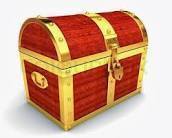Angola - Inglês

Certainly! Here is the complete historical financial report of Angola translated into English:
Basic Information: Angola
-
Country ISO Code: AO
-
Official Language: Portuguese
-
Language ISO Code: pt
History of Currencies Circulated in Angola
1. Macuta
-
ISO Code: Not applicable (before modern standardization)
-
Singular Name: macuta
-
Plural Name: macutas
-
Subdivision: 1 macuta = 40 réis or 2000 cowrie shells
-
Singular Fraction Name: Not applicable
-
Plural Fraction Name: Not applicable
-
Production Start Date: 1762
-
Production End Date: 1861
-
Circulation Start Date: 1762
-
Circulation End Date: 1861
-
Minted Coin Values: Not detailed; macuta coins were the basic unit
-
Banknote Values: Not applicable (metallic currency)
2. Portuguese Real (Réis)
-
ISO Code: PTM (before introduction of the escudo)
-
Singular Name: real
-
Plural Name: réis
-
Subdivision: Non-decimal
-
Singular Fraction Name: Not applicable
-
Plural Fraction Name: Not applicable
-
Production Start Date: Until 1861 (circulated in Angola during colonial period)
-
Production End Date: 1861 (replaced by the Macuta and later the Escudo)
-
Circulation Start Date: Colonial period
-
Circulation End Date: 1861
-
Minted Coin Values: Not detailed
-
Banknote Values: Not applicable
3. Mil Réis and Angolan Escudo (1st Issue)
-
ISO Code: AOE (Angolan Escudo)
-
Singular Name: escudo
-
Plural Name: escudos
-
Subdivision: 1 escudo = 100 centavos
-
Singular Fraction Name: centavo
-
Plural Fraction Name: centavos
-
Production Start Date: 1914
-
Production End Date: 1927
-
Circulation Start Date: 1914
-
Circulation End Date: 1927
-
Minted Coin Values: 10, 20, 50 centavos; 1, 2½, 5, 10, 20 escudos
-
Banknote Values: 20, 50, 100, 500, 1000 escudos
4. Angolar
-
ISO Code: AOA (Angolar)
-
Singular Name: angolar
-
Plural Name: angolares
-
Subdivision: 1 angolar = 100 centavos
-
Singular Fraction Name: centavo
-
Plural Fraction Name: centavos
-
Production Start Date: 1928
-
Production End Date: 1958
-
Circulation Start Date: 1928
-
Circulation End Date: 1958
-
Minted Coin Values: Similar denominations as escudo, continuing centavos
-
Banknote Values: Issued in 1926 and 1927, with exchange rate 1.25 escudos = 1 angolar
-
Note: Angolar was created to combat counterfeiting and was pegged to Portuguese escudo
5. Angolan Escudo (2nd Issue)
-
ISO Code: AOS (Angolan Escudo)
-
Singular Name: escudo
-
Plural Name: escudos
-
Subdivision: 1 escudo = 100 centavos
-
Singular Fraction Name: centavo
-
Plural Fraction Name: centavos
-
Production Start Date: 1958
-
Production End Date: 1977
-
Circulation Start Date: 1958
-
Circulation End Date: 1977
-
Minted Coin Values: 10, 20, 50 centavos; 1, 2½, 5, 10, 20 escudos
-
Banknote Values: 20, 50, 100, 500, 1000 escudos
6. Kwanza (1st Kwanza)
-
ISO Code: AOK
-
Singular Name: kwanza
-
Plural Name: kwanzas
-
Subdivision: 1 kwanza = 100 lwei
-
Singular Fraction Name: lwei
-
Plural Fraction Name: lwei
-
Production Start Date: 1977
-
Production End Date: 1990
-
Circulation Start Date: 1977
-
Circulation End Date: 1990
-
Minted Coin Values: 1, 5, 10, 20, 50, 100 kwanzas
-
Banknote Values: 50, 100, 500, 1000, 5000 kwanzas
-
Note: Introduced after independence to replace the escudo
7. Novo Kwanza (2nd Kwanza)
-
ISO Code: AON
-
Singular Name: novo kwanza
-
Plural Name: novos kwanzas
-
Subdivision: 1 novo kwanza = 100 lwei
-
Singular Fraction Name: lwei
-
Plural Fraction Name: lwei
-
Production Start Date: 1990
-
Production End Date: 1995
-
Circulation Start Date: 1990
-
Circulation End Date: 1995
-
Minted Coin Values: Not widely used due to inflation
-
Banknote Values: Various denominations with restrictions on conversion to control inflation
8. Kwanza Reajustado (3rd Kwanza)
-
ISO Code: AOR
-
Singular Name: kwanza reajustado
-
Plural Name: kwanzas reajustados
-
Subdivision: 1 kwanza reajustado = 100 lwei
-
Singular Fraction Name: lwei
-
Plural Fraction Name: lwei
-
Production Start Date: 1995
-
Production End Date: 1999
-
Circulation Start Date: 1995
-
Circulation End Date: 1999
-
Minted Coin Values: Not widely used
-
Banknote Values: Higher denominations due to inflation
9. Current Kwanza (4th Kwanza)
-
ISO Code: AOA
-
Singular Name: kwanza
-
Plural Name: kwanzas
-
Subdivision: 1 kwanza = 100 lwei
-
Singular Fraction Name: lwei
-
Plural Fraction Name: lwei
-
Production Start Date: 1999
-
Production End Date: In circulation
-
Circulation Start Date: 1999
-
Circulation End Date: In circulation
-
Minted Coin Values: 1, 2, 5, 10, 20, 50, 100 kwanzas
-
Banknote Values: 200, 500, 1000, 2000, 5000, 10,000 kwanzas
-
Note: Gradual stabilization after hyperinflation and civil war; new polymer banknotes issued since 2020
Additional Information
Economic Historical Context
-
Angola was a Portuguese colony from 1575 until independence in 1975.
-
During the colonial period, currency fluctuated between the real, escudo, angolar, and escudo again, always tied to the Portuguese economy.
-
After independence, the kwanza was created to assert economic sovereignty, but the country faced hyperinflation, civil war, and economic instability.
-
Multiple monetary reforms were undertaken to control inflation and stabilize the currency, including successive redenominations.
-
The current kwanza stabilized after the civil war ended in 2002 but remains volatile due to oil dependence.
Mint Locations / Production Sites
-
Coins and banknotes were initially produced in Portugal and Angola by colonial banks; after independence, by the National Bank of Angola.
-
Since 2020, Angola issues modern polymer banknotes.
Designs / Symbols / Abbreviations
-
Coins feature national symbols, Angolan flora and fauna, and historical figures.
-
Banknotes highlight the first president Agostinho Neto, cultural and natural elements of the country.
-
Kwanza symbol: Kz or simply K.
Print Runs / Quantities / Honorees / Seals
-
Specific print run data is not publicly available.
-
Agostinho Neto is the most honored figure on banknotes since independence.
Curiosities / Commemorative Coins
-
Commemorative coins have been issued on national occasions and to celebrate cultural heritage.
-
The 2020 polymer series brought greater durability and security to banknotes.
Current Circulation Status
-
The current kwanza (AOA) is actively circulating.
-
Fractional coins (lwei) have limited use due to inflation.
Issuing Authority
-
National Bank of Angola is the issuing and regulatory authority.
Relevant Monetary Legislation
-
Post-independence laws established the National Bank of Angola and national monetary policy.
-
Monetary reforms between 1990 and 2000 regulated inflation control and restored currency confidence.
Names and Positions of Banknote Signatories
-
Typical signatures include the President of the National Bank of Angola and the Bank Governor.
-
Agostinho Neto appears as a central figure on banknotes but not as a signatory.
List of People Honored on Coins and Banknotes
-
Agostinho Neto (first president)
-
Other independence leaders and Angolan cultural figures
This report provides a detailed overview of Angola’s monetary evolution, from colonial coins to the current kwanza, including technical, historical, and cultural information.
If you want, I can prepare the report for the next country or assist with any other request!
 Nilton Romani
Nilton Romani
